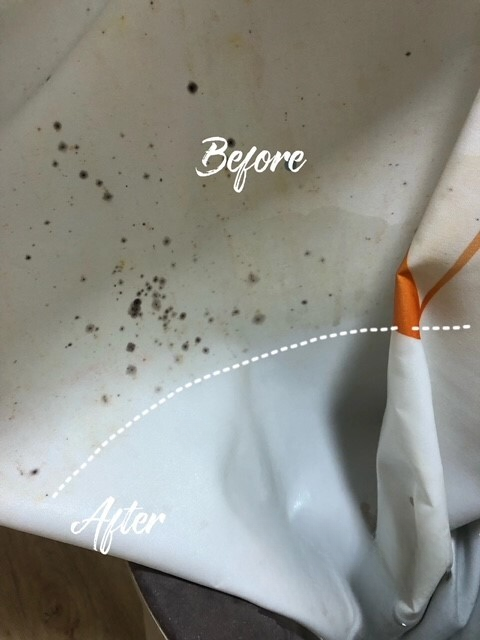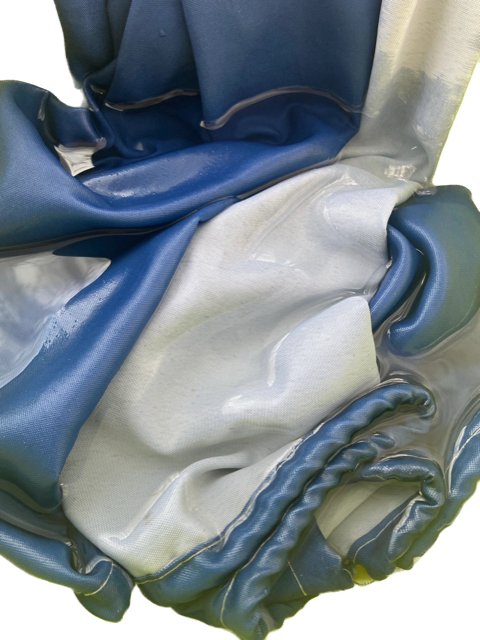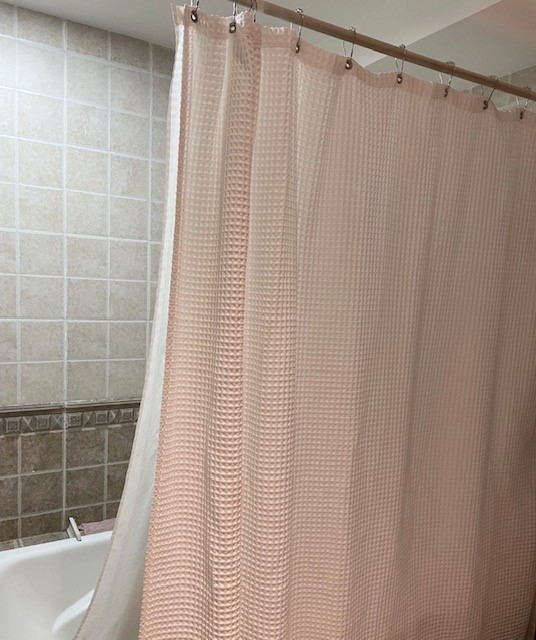Table of Contents
It’s every homeowner’s nightmare: you go into your bathroom, and there it is, mold on the shower curtain. Not only is this unsightly, but left unchecked, it can be dangerous to your health. To help make sure that doesn’t happen, we’ve created a comprehensive guide full of information about how to clean shower curtain mold. So whether you have some basic questions or need a deeper dive into tackling shower curtain mold, let us remove the fear of cleaning your bathroom!
Understanding Mold – What is mold, and how do you detect it on shower curtains

Mold is a fungus that can grow almost anywhere, especially in moist and humid environments like shower curtains. It’s important to recognize signs of shower curtain mold, as mold growing on shower curtains can cause breathing problems, aggravated asthma and allergies, and many other health issues. Check for patches or circles in black, green, or pink shades to detect shower curtain mold. Additionally, shower-related fabrics that start to smell musty may also indicate the presence of shower curtain mold. Once shower curtain mold is identified, it should be addressed with a specially designed cleaning treatment now rather than later.
Prevention is critical – Ways to prevent mold from building up on shower curtains
To prevent shower curtain mold from building up, it’s essential to thoroughly wash shower curtains with hot water and detergent every few weeks and hang them in a sunlit or well-ventilated room to dry. Additionally, using a shower spray with vinegar after each shower can help kill shower curtain mold before it has the chance to become a bigger problem. Taking preventive action early on is critical for protecting your health, as shower curtain mold can contribute to respiratory illnesses and exacerbate asthma and allergies.
Natural Remedies – How to use natural products to clean a shower curtain
Natural remedies can be as effective as chemical-based products when dealing with shower curtain mold. One natural way to eliminate the mold involves mixing a teaspoon of dish soap, hydrogen peroxide, and tea tree oil in a spray bottle full of warm water. Alternatively, you can use vinegar and baking soda paste to scrub the shower curtain or spray white vinegar directly. When cleaning, it is essential to remember to address the root causes by regularly opening windows or using fans. Natural remedies are cost-effective and easy to use while protecting yourself from toxic chemicals.
Chemical alternatives – Chemicals that can be used to eliminate mold
Trying to eliminate shower curtain mold can be a difficult task to tackle, but luckily there are chemical alternatives that can help. If shower curtains in the bathroom become damp, mold will quickly form. Rather than trying to scrub it off or replace the shower curtain, look to chemicals like hydrogen peroxide and vinegar combined with basic detergents, which can help reduce mold. These solutions help remove existing shower curtain mold without harsh chemicals and provide bacteria deterrents, so mold is less likely to grow.
How to clean fabric shower curtains

Clean by hand
- Start by spraying any spots of mildew or mold using bleach diluted in equal parts water, letting it sit for 10-15 minutes before removing the curtain from its rod.
- Remove the curtain from the rod and place it into an appropriately sized tub or bucket. Better to submerge the curtain in warm water.
- Add one tablespoon of liquid detergent and soak the curtain for 10 minutes. ( optional: add one tablespoon of bleach, in addition to help break down tough grime)
- Message the curtain. If the stains persist, sprinkle a teaspoon of baking soda and rub vigorously.
- Rinse off all residual suds trough draining out excess water
- Rehang the curtain, and spread it out on the rod to air-dry. For a short procession, you can run a fan or ventilation to dry it faster and discourage mold regrowth.
Clean by washing machine
- Start by spraying any spots of mildew or mold using bleach diluted in equal parts water, letting it sit for 10-15 minutes before removing the curtain from its rod. ( The same as the first step in “clean by hand”)
- Place a small load of laundry detergent into the washing machine in a regular circle.
- Rehang the curtain to air-dry. It is not recommended to use the dryer to prolong the life of the shower curtain.
How to clean a shower curtain liner

There are many trendy shower curtains available in the market. Many people add a shower curtain liner to preserve their delicate fabric or print from frequent wash and cleaning. There are many different materials for curtain liners. Which is good is subject to your preference.
PVC or polyester might be your best option if you need a durable, easy-to-clean liner. And if you’re keen on eco-friendly products, hemp or bamboo might be better choices. Remember, the non-smooth side should face out.
- Start by spraying any spots of mildew or mold using bleach diluted in equal parts water, letting it sit for 10-15 minutes before removing the curtain from its rod.
- Sprinkle an abrasive sponge with one teaspoon of baking soda, then drizzle with liquid dish soap.
- With the curtain still attached, use the sponge to scrub dirty areas.
- Finally, rinse off the shower curtain thoroughly.
- If you use a washing machine to clean your plastic liner, you should set it on a delicate cycle with an old towel inside the drum, adding extra scrubbing power without damaging the liner.
- Re-hung the liner to air-dry.
Common Pitfalls – Mistakes to avoid when cleaning a shower curtain
Cleaning a shower curtain is an often overlooked yet important cleaning step. Unfortunately, if you neglect cleaning it regularly, that shower curtain will quickly become a breeding ground for mold and other nasty germs. The conditions within the shower are perfect for mold to grow: wet. If left uncleaned, the mold spores will spread to other parts of your bathroom and multiply rapidly. Therefore, regularly cleaning your shower curtain is essential to keep your home germ-free and healthy!
Maintenance Tips – How to make sure your shower curtain stays free of mold in the long-term

Following these maintenance tips can keep shower curtains fresh, sanitary, and, most importantly, free from dangerous mold all year round.
- One way to keep shower curtains free of mold is to take preventative measures and clean them frequently. Keeping the shower curtains open whenever possible can help reduce areas where moisture accumulates, and mold grows.
- Consider adding a plastic liner inside if a shower curtain is made of fabric.
- If you follow the regular maintenance routine, taking down and washing your shower curtains only needs to be done every three months instead of monthly.
- Finally, replacing shower curtains periodically will ensure mold doesn’t grow behind the scenes between cleaning sessions.
Conclusion
Mold on a shower curtain is something that nobody wants to deal with. With this post’s help and guidance, you can enjoy a refreshing shower free from worries posed by maintaining healthy hygiene standards in your bathroom. So what are you waiting for? Let’s get started today on keeping your shower curtains mold-free!













